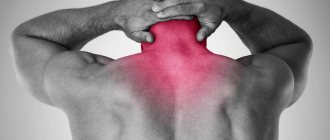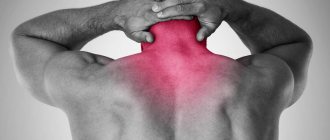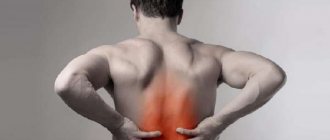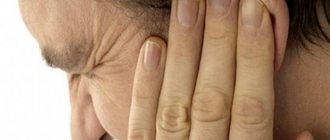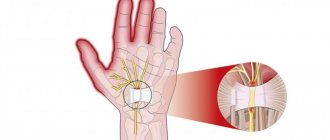Slader's syndrome is an inflammatory disease that affects the pterygopalatine nerve ganglion. Most often the disease has an infectious cause. It manifests itself as pain in the affected half of the face and is accompanied by numerous pronounced symptoms.
The pterygopalatine node is located in the pterygopalatine fossa, which is located in the temple area. It consists of three nerve roots. The branches of these nerve endings extend to the orbit, lacrimal gland and sphenoid sinus. They also innervate the nasal mucosa, ethmoid sinus, palate and upper jaw.
General information
Slader's syndrome is also called pterygopalatine ganglion neuralgia. In pathology, the pterygopalatine ganglion is affected - a nerve ganglion that includes processes of the maxillary nerve, as well as fibers located in the area of the carotid artery and oral cavity, salivary glands, palate, and nasal mucosa.
Damage to the nerve ganglion leads to numerous disorders. In severe cases, the disorder has a negative effect on the blood vessels supplying the brain. Also, the abnormal process can affect the neck muscles.
Diagnostics
It is sometimes very difficult for doctors to make an accurate diagnosis. Consultation with a neurologist, dentist, or ENT specialist is necessary.
Diagnostics is based on clinical data:
- severe and paroxysmal pain that resembles the sensation of a burn;
- itching of the affected area;
- paresthesia, anesthesia;
- swelling;
- hyperemia;
- amyotrophy;
- increased sensitivity;
- innervation disorder (pilomotor, secretory, vasomotor, trophic);
- catarrhal syndrome;
- local and general increase in temperature;
- malaise.
Upon examination, there will be pain on palpation of the pain points of the projection of the node itself and its nerves, and impaired sensitivity.
Sometimes additional diagnostic methods are used: otoscopy, pharyngoscopy, radiography.
How is ganglionitis diagnosed?
Differential diagnosis is carried out with diseases such as syringomyelia, meningoradiculitis, neurovascular syndrome, neuritis of the somatic nerves, diseases of the heart and abdominal organs.
Factors causing the development of the disease
The exact cause of ganglionitis is unknown. The disease is believed to have a multifactorial origin.
Possible prerequisites include:
- infectious lesions accompanied by inflammation;
- concomitant chronic diseases (pharyngitis, otitis media, tonsillitis);
- intoxication;
- arthritis;
- congenital anomalies of the nasal cavity;
- injuries and damage accompanied by deformation of the septum;
- prolonged exposure to low temperatures;
- rheumatism;
- late stages of caries;
- inflammatory processes in tissues (phlegmon, abscesses).
Factors that provoke Sluder syndrome also include decreased immunity, stress and physical activity, bad habits, chronic fatigue, and metabolic disorders.
Causes and symptoms
Depending on which ganglion is affected, there will be corresponding clinical manifestations, which are described below.
Ganglionitis of the pterygopalatine ganglion (Slader syndrome)
The causes of the pathological condition are arthritis of the temporal mandibular joint, purulent pharyngitis, chronic processes in the sinuses (sinusitis), teeth (caries, periodontitis), tonsils (tonsillitis).
Clinical manifestations are very diverse. This is explained by the fact that the node has individual anatomical features and a large number of anastomoses for each person. The pain is burning, bursting, very intense in half the body (hemitype). Pain can be localized not only in the area where the node itself is located, but also in the following areas: around the orbit, in the eye, the root of the nose, the upper and lower jaw (teeth, gums), temples, auricle, back of the head, shoulder, forearm, hand.
Painful sensations are accompanied by catarrhal syndrome: hyperemia and swelling of the face, lacrimation, rhinorrhea from one nostril, drooling. This condition is more often observed at night, the duration of the paroxysm is from several minutes to several days.
To confirm ganglionitis of the pterygopalatine ganglion, they use the method of lubricating the nasal cavity with a solution of dicaine with adrenaline, after which the pain disappears.
In the periods between attacks, mild signs of vegetative symptoms remain.
Inflammation of the cervical sympathetic nodes
The etiological factors are mainly chronic infection and intoxication.
Pain sensations radiate (give) to half of the body. Signs: redness, stuffy half of the nose, tissue hypotrophy, a large number of wrinkles, sometimes hyperpigmentation of the corresponding half of the face, hyperemia of the apple, Bern-ra-Horner and Pourfur-de-Petit syndrome.
Causes: tonsillitis, chronic infectious diseases, intoxication.
Most often, patients complain of pain in the cervical-occipital region and shoulder girdle. When palpating pain points in the projection of the node, the exit point of the occipital nerves, the paravertebral region, pain is felt. Accompanied by redness and atrophy of the corresponding half of the face.
Ganglionitis of the upper cervical ganglion
Pathology of the submandibular and sublingual nodes
In this case, the pain is localized in the tongue, submandibular region with irradiation to the lower jaw, neck, back of the head, and temples. The pain intensifies with movements of the lower jaw (eating, talking). The secretion of saliva increases, the tongue and tissues of the submandibular region swell. The anterior part of the tongue and the oral mucosa are characterized by increased sensitivity and hyperpathy. In addition, there will definitely be a lingual-submandibular pain phenomenon.
Ganglionitis of the geniculate ganglion (Ramsay Hunt syndrome)
The herpes virus is the cause of the disease.
The onset of the disease is acute, manifested by general malaise, paresis of the facial nerve, and hearing loss. Pain attacks occur on the affected side in the ear area; they can spread to the back of the head, neck, head, face and be neuropathic in nature. In addition, herpetic rashes are observed in the affected areas and on the mucous membrane (soft palate, tonsils). The patient may complain of hearing loss, dizziness, and noise in the ear. On examination there will be horizontal nystagmus and paresis of the facial muscles. Sensitivity is lost on half of the tongue.
Ganglionitis of the Gasserian (trigeminal) ganglion
The disease is caused by a herpes infection, which occurs against the background of reduced immunity, especially in older people.
Ganglionitis is characterized by increased temperature, general malaise, intoxication, photophobia, paresthesia, painful and constant pain in the area of innervation of the first, less often the second and third branches. A few days after the onset of pain, a vesicular rash and swelling of the periocular area are observed.
Damage to the ciliary ganglion (Openheim syndrome)
The main causes are sinusitis and the herpes virus.
Characteristic. Paroxysmal pain in the forehead, eye socket, temples, root of the nose and hard palate. It causes a sensation as if the eyeballs are protruding from the orbit. On examination, the mucous membrane of the eyes is red, the eyelids are swollen, profuse lacrimation, Petit and Horner syndrome.
Ganglionitis of the ear ganglion (Frey's syndrome)
Possible causes: mumps, sialadenitis, diseases of the dental system.
Paroxysmal pain with signs of vegetalgia occurs in the area in front of the temporomandibular joint, temples, and ear. Irradiates (gives) to the back of the head, neck, shoulder girdle, arm, upper chest. In this case, the patient complains of noise in the ear (with spasm of the auditory tube), increased salivation. Subzygomatic blockade of the ear node successfully relieves pain and this makes it possible to diagnose Frey's Syndrome.
Pathology of the stellate ganglion
The pain that occurs is very reminiscent of an angina attack, localized in the upper part of the chest and radiates (gives) to the arms.
Clinical manifestations
The main symptom of Slader syndrome is intense pain localized in the facial area. As a rule, such a manifestation is acute and short-term in nature. The location of the pain changes periodically. Most often the area around the sinuses, upper jaw, and sometimes under the eyes hurts. In some cases, a unilateral course of ganglionitis is noted.
When the pathological process is aggravated, the patient experiences severe headaches. They are shooting in nature and most often appear in the temples or parietal area. Often the pain spreads to the muscles in the neck, back, and sometimes the hands.
In this case, the following symptoms occur:
- bitter taste in the mouth;
- change in color of the affected area of the face (pallor or redness);
- periodic fainting;
- increased tearfulness;
- excessive salivation or dry mouth;
- nasal discharge;
- swelling of the skin.
The pathology occurs in a chronic form and is characterized by periodic exacerbations, after which long-term remission occurs. Quite often, exacerbations occur during the change of seasons, usually in autumn or spring.
Slüder's disease has a very wide range of possible symptoms and signs, so it is necessary to seek the help of a doctor to confirm the diagnosis.
Causes of neuralgia
The occurrence of neuralgia can be caused by several factors:
- regular hypothermia;
- various injuries;
- intoxication processes;
- tumors of a benign and/or malignant nature;
- various inflammatory diseases;
- demyelinating processes.
In medicine, there are several types of neuralgia - their classification depends on which specific peripheral nerve is affected.
Trigeminal neuralgia
It is believed that this nerve is most often damaged, and it is this nerve that provides tactile sensitivity to the face. Symptoms of this type of neuralgia are:
- Acute pain. It is so harsh that many patients characterize it as “incompatible with life.” It is distinguished by its clear localization - the syndrome occurs only on one side, precisely on the one where the trigeminal nerve is affected.
- Vegetative reactions. They always occur against a background of severe pain - for example, lacrimation, excessive salivation.
It is noteworthy that pain due to inflammation of the trigeminal nerve can occur as a reaction of the body to jaw movements (even minimal ones), talking or shaving.
Please note: if the mandibular branch of the trigeminal nerve is affected, various motor disorders in the masticatory muscles may occur - for example, atrophy, spasms, twitching.
The course of trigeminal neuralgia is usually long-term, with periods of exacerbation and remission often changing. It is worth noting that patients in most cases manage to achieve long-term, stable remission.
The glossopharyngeal nerve provides sensitivity to the tonsils, tympanic cavity in the ear, and tongue. The same nerve is responsible for the normal functionality of the parotid gland and the motor activity of the muscles of the pharynx.
Please note: it is neuralgia of the glossopharyngeal nerve that can be provoked by various diseases - for example, the cause may be tonsillitis, tonsillitis (inflammation of the tonsils), .
The main symptom of this type of neuralgia is pain localized in the ear, back of the tongue and soft palate. The pain is always paroxysmal, acute and short-lived. Naturally, a powerful pain syndrome is always accompanied by vegetative reactions - in this case it will be a loss of taste sensitivity of the tongue, a radical change in taste sensations (often all food and even ordinary water taste bitter), dry throat.
Neuralgia of the glossopharyngeal nerve can be provoked by talking, the process of swallowing, or the process of yawning. The first sign of the condition in question can also occur when eating food that is too hot and/or too cold.
Most often, this type of disease in question occurs against the background of inflammatory diseases of the ENT organs. The very first symptom of neuralgia of the pterygopalatine ganglion is, of course, pain, but with a specific localization - the area of the orbit - the root of the tongue - the teeth of the upper jaw. The pain may radiate to the temple and neck, but in any case the patient will accurately indicate the area of distribution of the syndrome.
Very often, an attack of pain with neuralgia of the pterygopalatine ganglion occurs at night, can last several minutes, but often lasts several hours or even days.
This type of disease in question always has a long duration, occurs with alternating periods of remission and exacerbation, the next attack can be triggered by overwork, a common cold, and even just strong emotions (no matter - positive or negative).
This type of disease in question belongs to the list of possible complications due to progression. Very often, such neuralgia is diagnosed if herpes develops in old age or in patients with a reduced level of immunity.
A characteristic feature of herpetic neuralgia is that pain occurs only in areas affected by infection, and even intense pain can last for several days and months (up to six months). Patients often characterize pain in this type of neuralgia differently - dull, stabbing, cutting, burning, shooting, deep.
Please note: an attack of pain with herpetic neuralgia can occur even with a light touch to the affected area - for example, while getting dressed.
This type of neuralgia is also called Roth's disease and is characterized by pain, tingling and burning on the front outer thigh. Attacks of pain can be rare, or they can bother the patient constantly.
The causes of the development of neuralgia of the external cutaneous nerve of the thigh can be pregnancy, injuries in the groin or thigh area, prolonged wearing of a bandage, or against the background of diseases of the lower extremities of a vascular nature.
Intercostal neuralgia
The main symptom is pain localized along the intercostal nerve, which sharply intensifies with inhalation, turning the body, and any movements. Coughing and sneezing generally cause intense pain, and you can’t even touch your ribs because of it. The result of such severe pain will be a forced holding of breath and almost complete immobility of the patient - this is due to the fear of experiencing another “portion” of unpleasant sensations.
Many factors can provoke the development of intercostal neuralgia:
- staying in an uncomfortable position for a long time;
- severe and persistent cough;
- diseases of the respiratory system of an inflammatory nature;
- pathologies of the thoracic spine.
Please note: if symptoms of intercostal neuralgia occur, you must be examined by a doctor - this will rule out diseases with similar symptoms, which include pleurisy and pneumothorax. If the pain is localized on the left side, then you need to seek help from a cardiologist who will conduct specific examinations (electrocardiogram) and rule out (or confirm) progression or angina pectoris.
Diagnostic measures
Pterygopalatine ganglionitis is diagnosed based on the results of several procedures.
These include:
- taking anamnesis;
- examination of the patient;
- radiography;
- ultrasound examination;
The examination is carried out in accordance with the nature of the disturbing symptoms. If pain is observed in the ear area, otoscopy is prescribed, which is necessary to identify pathological changes in the organ. The nasal cavity is examined in the same way.
The main sign indicating the presence of the syndrome is a positive reaction to the application of an analgesic to the area of the back of the nasal cavity. The drug is sprayed in the form of a liquid solution or spray. Elimination of pain indicates a neurological origin of the pathology and indicates Slader's disease.
Prevention
First of all, it is necessary to treat chronic diseases, since they are the main cause of ganglionitis. The second task is to strengthen the immune system. To do this, you need to eat right, exercise, and avoid stressful situations. Immunostimulants can be used. In addition, it is necessary to avoid hypothermia and injury.
To treat ganglionitis, it is necessary to first understand and find out the etiological factor. There are many treatment options, it all depends on the affected ganglion, the patient’s condition, concomitant diseases, and contraindications. The prognosis with high-quality treatment is quite favorable.
Slader's syndrome is a pathological phenomenon accompanied by intense pain in the facial area. The disorder can have different origins, but is mainly provoked by neuralgic diseases. The anomaly is considered a form of ganglioinitis and requires timely medical intervention.
Effective treatment methods
Several specialists are involved in identifying and eliminating ganglionitis: a neurologist, an otolaryngologist, in some cases an infectious disease specialist and a surgeon. Therapy is carried out primarily through medication. Surgical treatment is performed only if there is no effect from conservative measures.
Drugs
Conservative drug therapy is aimed at eliminating the causes of neuralgia that provokes symptoms. Taking medications can reduce the intensity of pathological manifestations.
It is recommended to treat ganglionitis with the following groups of drugs:
- antibiotics (for bacterial infections - “Clarithromycin”, “Tsiprolet”);
- antiviral (for viral infection - Aflubin, Lavomax);
- analgesics (to eliminate pain - “Ibuklin”, “Pentalgin”);
- antispasmodics (prescribed for muscle spasms "Drotaverine");
- to reduce the activity of the parasympathetic departments and reduce secretion, use “Platifillin”;
- sometimes antiallergic drugs (Suprastin, Erius) help improve the condition;
- in some cases they resort to tranquilizers (Sibazon, Relanium).
Vitamin complexes, immunostimulants, and folk remedies are also used. Procedures and medications for the treatment of Slader syndrome should be prescribed by a leading physician in accordance with the clinical picture.
Surgery
Indicated in the absence of effectiveness of drug treatment, in the case of systematic development of relapses, as well as in complicated forms of pathology.
Surgical therapy involves alcoholization of the nerve ganglion. Due to the introduction of high-percentage ethyl alcohol, the conductivity of the nervous tissue is interrupted, as a result of which all symptoms of the pathology are eliminated. Subsequently, the tissues die. The substance is administered directly into the pterygopalatine node through injection.
( 2 ratings, average: 5.00 out of 5)
Rules for treating neuralgia at home
It is necessary to treat the disease in question under the supervision of specialists - they will conduct a full examination of the patient and make competent prescriptions, especially since medications are selected on an individual basis.
Drug therapy
Neuralgia of any kind must be treated with the use of specific medications. Of course, the doctor must select specific medications and dosages, but there is also a general list of effective medications prescribed when diagnosing the disease in question. These include:
- muscle relaxants – sirdalud, mydocalm, baclofen;
- drugs with anticonvulsant effects - gabantine, finlepsin, tebantine, carbamazepim;
- topical ointments and gels – fastum-gel, deep relief, apizartron;
- vitamins from the B line - milgamma, neurorubin, cocarnit.
Physiotherapeutic appointments
Physiotherapy plays a major role in recovery, and in some cases doctors prefer to do without prescribing medications - for example, if the patient claims that the pain is not intense. The following physiotherapeutic appointments are most often made:
- For trigeminal neuralgia in the acute stage - infrared rays in a weak dosage, irradiation with a Solux lamp, electrophoresis with an anesthetic (Novocaine) and vitamins, ultrasound with hydrocortisone on the affected areas.
- For trigeminal neuralgia in remission - massage of the collar area of the spinal column, paraffin applications on the affected half of the face, baths with sea or hydrogen sulfide water, acupuncture and reflexology.
Please note: if periods of exacerbation occur too often, then it is advisable to perform magnetic resonance imaging for trigeminal neuralgia (this will help establish more precise causes of the disease) and give preference to surgical treatment.
If neuralgia was diagnosed against the background of muscle tissue atrophy, then patients are additionally prescribed physical therapy; swimming, aerobics and visiting the gym will be effective.
Of course, in the category of “traditional medicine” there are means to alleviate the condition of a patient with neuralgia. But pay attention - it is for relief, but not for treatment! Doctors recommend using traditional treatment during periods of remission - this will help prolong the period, or for mild pain.
Effective methods for neuralgia from the category “traditional medicine”:
- Prepare a decoction of chamomile according to the classic recipe (1 tablespoon per glass of boiling water, leave for 15 minutes and strain), put a small amount of the product in your mouth and hold there for 5 minutes. You need to do at least 5 such “approaches” in one procedure. It helps very well with trigeminal neuralgia.
- Make a compress with a decoction of marshmallow root (4 tablespoons of the raw material are poured into a glass of water, the product is infused for 8 hours) and apply the compress to the sore side of the face (on the cheek). It is advisable to apply this compress at night so that it can be removed in the morning. It is advisable to treat trigeminal neuralgia in this way.
- During pain, apply any heat to the problem area, but healers recommend using a boiled chicken egg for this - it needs to be peeled and cut lengthwise, and the yolk side should be applied to the sore spot.
Neuralgia of any kind is a real test for a person, so you should not try to relieve the pain syndrome on your own and use powerful painkillers to alleviate the condition. Only a doctor can provide real help - there is definitely no need to delay a visit to a medical facility.
Tsygankova Yana Aleksandrovna, medical observer, therapist of the highest qualification category.
Ganglionitis is an inflammation of the ganglion, the constituent components of which are nerve cell bodies, axons, and dendrites. In this case, the normal functional ability of the sympathetic column is disrupted and this is manifested by dysfunction of secretion, pain sensitivity and other important tasks. It is impossible not to note emotional disorders that greatly affect relationships with other people.
- pterygopalatine;
- ciliary;
- ear;
- geniculate;
- trigeminal;
- submandibular;
- sublingual;
- star-shaped;
- upper cervical
The cause of the disease can be a variety of acute and chronic infections. For example, malaria, brucellosis, syphilis, tonsillitis, influenza, rheumatism, herpes. In addition, trauma, tumors, intoxication, and corticosteroid therapy can be factors for the occurrence of the inflammatory process.
Neuralgia of the pterygopalatine ganglion - causes (etiology)
The pterygopalatine ganglion lies in the pterygopalatine fossa, it is connected with the second branch of the trigeminal nerve, with the geniculate ganglion, with the upper cervical nodes of the border sympathetic trunk and the sympathetic plexus of the vertebral artery, therefore, when it is irritated, a complex and unique clinical syndrome develops, including somatic and autonomic disorders . The diseases were described by G. Sluder in 1908.
Neuralgia of the pterygopalatine ganglion - symptoms (clinical picture)
With neuralgia of the pterygopalatine ganglion, there are attacks of severe pain in the root of the nose, around the eyes and at the base of the teeth of the upper jaw, accompanied by nasal discharge, hyperemia of the nasal mucosa and conjunctiva, swelling of the facial skin, lacrimation, hyperhidrosis, hypersalivation, frequent sneezing, photophobia, dizziness, nausea and sometimes an asthma-like condition. There is noise and ringing in the ear. The pain is one-sided, has a boring nature, and, compared to pain with trigeminal neuralgia, is less intense and persistent. After attacks, dull pain or paresthesia remains. The attack lasts from several hours to a day or more and occurs most often at night.
Neuralgia of the pterygopalatine ganglion - treatment
Neuralgia of the pterygopalatine node develops with sinusitis (disease of the main or ethmoid sinus). In this regard, simultaneously with the special treatment carried out by an otolaryngologist, physiotherapy should also be included in the treatment complex: e. p. UHF on the corresponding half of the face every other day, a total of 12-15 procedural courses of treatment in an oligothermic dosage, a gap of 3 to 5 cm or with a transverse arrangement of electrodes (UHF-4 device), procedure duration - 15 minutes. In addition, given the pronounced vegetative coloring of the attack, calcium galvanic collars with a 5-10% solution of calcium chloride should be prescribed every other day.
Neuralgia of the ciliary ganglion
(neuralgia, Charlen's syndrome) is characterized by paroxysmal pain in the eyeball, at the root of the nose, sometimes in the entire half of the nose, with hyperemia and increased secretion of the nasal mucosa, with redness of the conjunctiva, lacrimation on the side of the pain. Charlene's neuralgia is accompanied by keratitis or iritis. The cause of Charlene's neuralgia is most often ethmoiditis, intoxication, including endogenous (diabetes), trauma, glaucoma, diseases of the conjunctiva, and cornea. Neuralgia of the long ciliary nerves is close to the picture described. Its cause is dysfunction of the autonomic nervous system, often caused by infection and intoxication. The clinical picture of neuralgia consists of the following symptoms: paroxysmal contracting pain in the area of the eyeball or in the depths of the orbit. Pain most often occurs in the evening or morning, lasts for hours or days, is accompanied by hyperemia and swelling around the eye, photophobia, lacrimation, frequent blinking, narrowing of the palpebral fissure, scleral injection, loss or decrease in corneal and conjunctival reflexes, impaired pupillary reactions, soreness of the eyeballs when palpation, inner corner of the orbit. Often both parties are involved in the process.
Neuralgia of the pterygopalatine ganglion
(Sludera) develops with damage to the pterygopalatine ganglion and its roots, namely the branches of the maxillary nerve or the Vidian nerves (see above). The sensory branches of the maxillary nerve extending from the pterygopalatine node or passing through it innervate the orbit, the mucous membrane of the main and ethmoid sinuses, the nasal cavity, palate, tonsils, and upper gums. This is where the pain spreads. Pain usually occurs in the form of attacks, localized in the root of the nose, in the eyeball, around the eye, upper, less often lower jaw, teeth, spreading to the temple, ear. Particularly intense pain is felt at a point located 5 cm posterior to the mastoid process. In some patients, the pain extends to the back of the head, neck, shoulder blade, and shoulder. With very pronounced paroxysms it reaches the forearm and hand. Sometimes it is localized in the hard Isba, throat. An attack of pain may be accompanied by flickering scotomas, perversion of taste, and salivation. In some patients, herpetic rashes can be found in the area of the hard and soft palate; sensitivity disorders (analgesia, hypoesthesia, hyperesthesia) in the area of innervation of the terminal branches of the zygomatic, zygomatic-facial or zygomatic-temporal nerves.
Autonomic syndromes in Sluder's neuralgia
: redness and swelling of the nasal mucosa, lacrimation, photophobia, sometimes asthmatic-type shortness of breath.
M.B. Krol, E.A. Fedorova, 1966, note that in some cases of Sluder's neuralgia
, the clinical picture may be limited to otalgia, pain in the tongue, nausea, dizziness, scotomas (scotoma), photophobia, and asthma.
The causes of neuralgia are inflammatory diseases, tumors, injuries of the main, ethmoid sinuses. Vidian neuralgia
(Vidian nerve syndrome, File's syndrome) is characterized by paroxysmal pain in the eyeball, in the orbit, nose, radiating to the face, ear, teeth, head, neck, shoulder. The pain is one-sided, often occurs at night and lasts from one to several hours. The cause of the disease is most often damage to the sinus of the main bone or the anterior part of the pyramid of the temporal bone. Described by R. Veil, 1932.
Ganglionitis of the ear node
characterized by paroxysmal, aching, burning pain in the posterior temporal region, at the tragus of the ear, which radiates to the lower jaw, sometimes the neck. Some patients experience a feeling of ear congestion and “squelching” in it. During an attack, hypersalivation and Frey's syndrome are possible. The duration of pain is from 5 to 40 minutes.
Ganglionitis of the submandibular node
. With it, the patient is bothered by constant dull pain in the submandibular region, accompanied by a feeling of tension and fullness in various parts of the face (tongue, lip, temple). Against the background of these sensations, patients experience periodic intense pain lasting from 10 to 60 minutes. The painful point is palpated in the submandibular triangle. Sometimes during an attack the patient experiences hypersalivation or, conversely, dry mouth.
Ganglionitis of the sublingual ganglion
. Dull pain is localized in the sublingual area, tongue, and, to a lesser extent, in the submandibular area. The pain periodically intensifies, becoming sharp. The painful point is located under the horizontal branch of the lower jaw, 2.5 cm behind the mandibular ridge. With ganglionitis of the sublingual node, a violation of salivation may also be observed - dry mouth or increased salivation.
Educational video on the anatomy of the trigeminal nerve and its branches
Other video lessons on this topic are:

